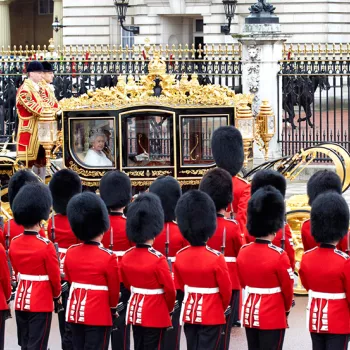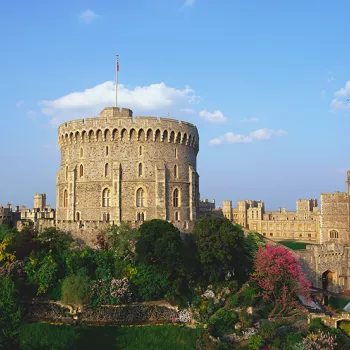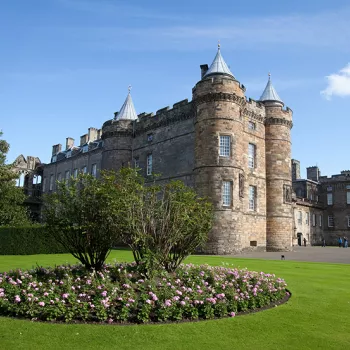History of the Royal Mews
Origins
The current Royal Mews was built in the gardens of Buckingham Palace in 1825. However, the history of the institution goes back much further, to the King's Mews in the reign of Richard II in the late 14th century. For around 100 years until the reign of Henry VII, the King's Mews was at Charing Cross on the present site of the National Gallery in London.
The name 'Mews' comes from the royal hawks that were originally kept at the King's Mews. The word 'mew' means moulting, and the birds were kept in a 'mews' as they weren’t used for hunting whilst their feathers moulted. The building was destroyed in a fire during the reign of Henry VIII in 1534 and rebuilt as stables but kept the name 'Mews' even though it had a different function.
George III
After George III bought the then Buckingham House in 1762, he moved some of his horses and carriages to the grounds and commissioned the architect Sir William Chambers to create a riding school. However, the main royal stables housing the ceremonial coaches and their horses remained at Charing Cross.
George IV
John Nash; who was in charge of rebuilding Buckingham Palace for George IV; also built the present Royal Mews. The buildings were completed in 1825 at a cost of over £65,000. Nash built grand stables for 100 horses around the riding school, a Doric-style arch, surmounted by a clock tower, leading into the quadrangle of the Mews, as well as coach houses and harness rooms.
Queen Victoria
In 1837, Queen Victoria became the first monarch to live in the redesigned Buckingham Palace. At which point the Royal Mews became a much more active place, developing into what Queen Elizabeth II called 'a small village which belongs to Buckingham Palace'. Queen Victoria established a school in the Mews for the children of families working there, and her husband, Prince Albert, added a new forge and other buildings. All of Victoria and Albert's children learnt to horse ride in the Riding School at the Mews.
THE ROYAL MEWS TODAY
The Royal Mews provides road transport for The King and members of the Royal Family by both horse-drawn carriage and motor car. It is also one of the finest working stables still in existence, responsible for the training of the Windsor Greys and Cleveland Bays, the horses that pull the royal carriages. It's responsible for looking after the state carriages, coaches and cars used by The King and members of the Royal Family during state occasions, including coronations, the State Opening of Parliament and visits by heads of state.
Around 50 times a year carriages from the Royal Mews take newly appointed high commissioners and ambassadors to present their credentials to the monarch at Buckingham Palace. And every day since 1843, the messenger Brougham carriage has set out from the Royal Mews to collect and deliver post between Buckingham Palace and St James's Palace. The latest coach to join the collection of royal coaches is The Diamond Jubilee State Coach which was built to commemorate Queen Elizabeth II's Diamond Jubilee.











